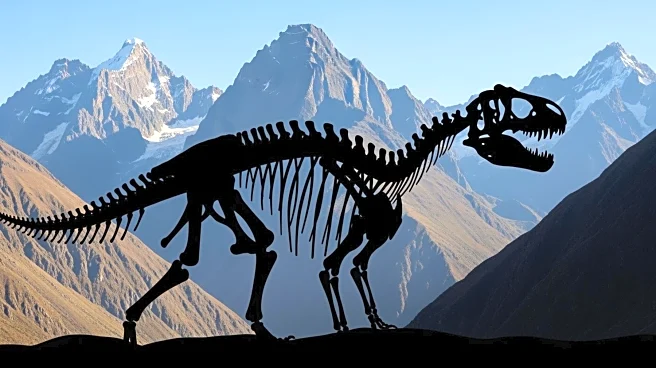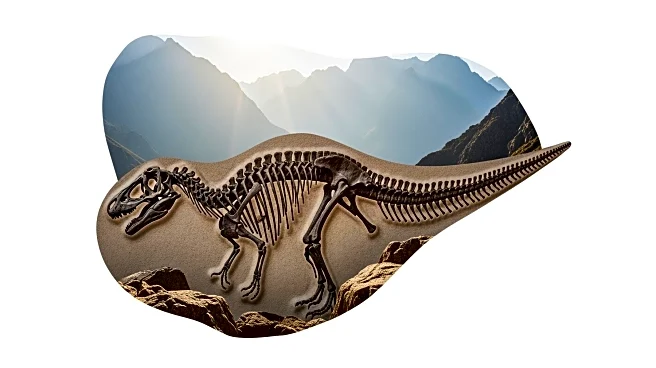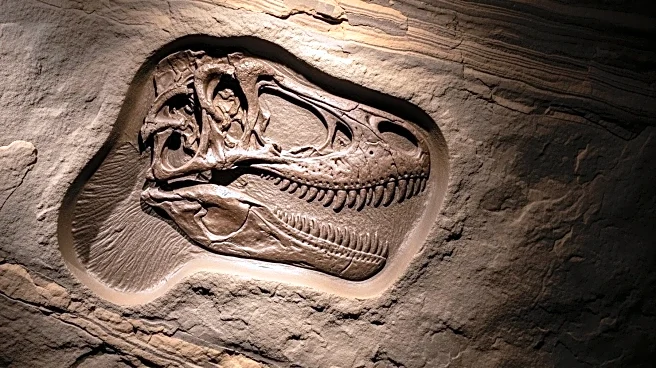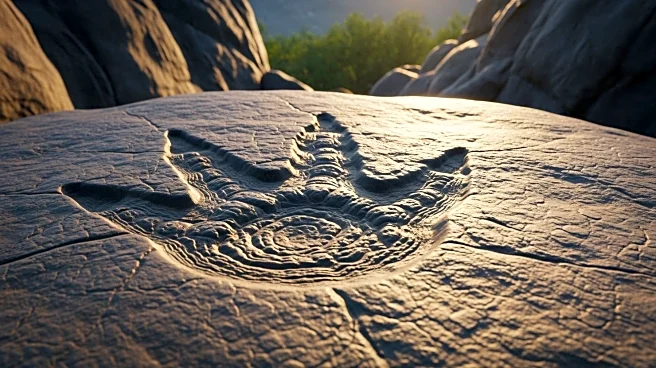What's Happening?
Argentine scientists have uncovered a nearly complete skeleton of a previously unknown dinosaur species, Huayracursor jaguensis, in the Andes Mountains. This discovery, detailed in a paper published in Nature,
reveals that the dinosaur lived approximately 230 million years ago during the Late Triassic period. The fossils were found in the Santo Domingo Formation in La Rioja province, northwestern Argentina. The Huayracursor jaguensis is believed to have been a sauropodomorph, a group of herbivorous dinosaurs known for their large size and long necks. The neck bones of this species show signs of extensions, which may have contributed to the evolution of long-necked sauropodomorphs found in later periods. The discovery expands the understanding of the diversity and geographic range of early dinosaurs, as much of the evidence of early dinosaur evolution has been found in South America, particularly in the Ischigualasto-Villa Unión Basin in Argentina and the Paraná Basin in Brazil.
Why It's Important?
The discovery of Huayracursor jaguensis is significant as it provides new insights into the evolution of sauropodomorphs, particularly their neck elongation and body mass increase. These traits are believed to have emerged at the dawn of dinosaurs, offering a deeper understanding of dinosaur evolution during the Late Triassic period. The finding also highlights the diversification of animal groups during this time, including dinosaurs, early mammal relatives, and crocodile ancestors. By expanding the known diversity and geographic range of early dinosaurs, this discovery contributes to the broader paleontological knowledge of prehistoric life and ecosystem changes. It underscores the importance of South America, particularly Argentina, as a key region for paleontological research and discoveries.
What's Next?
Further analysis of the Huayracursor jaguensis fossils is expected to provide more detailed information about its anatomy and evolutionary significance. Researchers may continue to explore the Santo Domingo Formation and other regions in the Andes to uncover additional fossils that could shed light on the early evolution of dinosaurs. The discovery may also prompt new paleontological expeditions in South America, aiming to find more evidence of early dinosaur species and their ecological interactions. As scientists study these findings, they may revise existing theories about dinosaur evolution and diversification during the Late Triassic period.
Beyond the Headlines
The discovery of Huayracursor jaguensis in a distinct region of the Andes Mountains, about 2 miles above sea level, suggests that early dinosaurs may have inhabited diverse and challenging environments. This raises questions about how these species adapted to different ecological conditions and what factors drove their evolutionary changes. The finding also highlights the potential for uncovering new species in less-explored areas, emphasizing the importance of continued exploration and research in paleontology. Additionally, the discovery may inspire interest in the cultural and scientific heritage of Argentina, promoting further investment in paleontological studies and conservation efforts.












